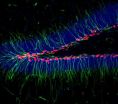(Press-News.org) Managers in the private and public sectors must consider work environment when rationalising production to obtain sustainable systems. A research study published in the journal Applied Ergonomics reveals that rationalisation measures often have a major negative impact on both the physical and psychosocial work environment. "However, the review also presents scientific evidence on how to reduce this problem," says one of the researchers, at the University of Gothenburg.
"Considerable resources all over the world have been invested in dealing with work-related disorders. But research from the past twenty years has been unable to prove that these investments have led to any general long-term improvement of the physical and psychosocial work environment" says Jørgen Winkel, at the Department of Work Science at the Univesity of Gothenburg, who together with Professor Rolf Westgaard at the University of Trondheim has scrutinized about 10,000 scientific papers. The analyses and results are published in the recent issue of the scientific journal Applied Ergonomics.
No long-term effect
Their conclusion is that a dialogue-based leadership that includes the employees is essential when rationalisation measures are introduced.
Some of the main findings of the study:
Physical exercise, stress management, ergonomic improvements in chairs, desks, keyboards, tools and other efforts for the individual have not had any demonstrable long-term effect on employee health despite several decades of extensive research within the field.
Rationalisation measures that lack any preventive focus on work environment most often lead to negative effects for the employees in the form of widespread stress, increased time pressure and unreasonable demands. This may cause poor mental and physical health, for example in the form of anxiety, fatigue and depression and musculo-skeletal disorders.
It is possible to reduce or even avoid the negative effects of rationalisation measures. This requires a management that prioritises the following issues as an integrated part of the rationalisation processes:
Active involvement
Active employee involvement in the rationalisation and production processes.
A dialogue-based leadership including all employees.
Sufficient information for the employees about the rationalisation processes and anticipated results.
Organisational and social support at the workplace and fair treatment of employees throughout the process.
"Proper consideration of these issues allow a development towards sustainable production systems" says Jørgen Winkel. A 'Sustainable production system' is here defined as the joint consideration of competitive performance and working conditions in a long term perspective.
In the study, rationalisation measures are described as being positive and absolutely essential in order to maintain competitive edge on the global market, and thus resources for good working conditions. At the same time, the results do not suggest that we should stop implementing traditional ergonomic measures aimed at individual employees.
INFORMATION:
Read the article in Applied Ergonomics (2011). Westgaard RH., Winkel J. "Occupational musculoskeletal and mental health: Significance of rationalization and opportunities to create sustainable production systems – A systematic review."
Link: http://www.sciencedirect.com/science?_ob=ArticleURL&_udi=B6V1W-512DT0S-1&_user=646099&_coverDate=09%2F20%2F2010&_rdoc=1&_fmt=high&_orig=search&_origin=search&_sort=d&_docanchor=&view=c&_acct=C000034699&_version=1&_urlVersion=0&_userid=646099&md5=860803292a25d0fc8053e5c8bfa19301&searchtype=a
Rationalization measures are the main cause of poor work environment
2010-12-15
ELSE PRESS RELEASES FROM THIS DATE:
Anatomy of a shopping spree: Pretty things make us buy more
2010-12-15
Chestnut Hill, Mass. (Dec. 14, 2010) – With the holidays fast approaching and consumers in full shopping mode, new research shows that a seemingly innocent luxury item purchase can lead to an unintended, budget-busting spending spree.
The problem starts with the purchase of a new item, particularly those among designer product lines, luxury branded items, or consumer goods of high-end design. Once home, these items – graced with what researchers call salient design elements, such as a unique pattern or interesting color scheme – can look out of place when compared to ...
Study shows post-9/11 security zones blight landscape
2010-12-15
DENVER (Dec. 14, 2010) – A decade after the 9/11 attacks, significant parts of America's most prominent downtowns remain largely sealed off as `security zones,' but a newly published study by University of Colorado Denver professor Jeremy Németh says this has led to blighted landscapes, limited public access and a need for a new approach to urban planning.
"Our most open, public cities are becoming police states," said Németh, assistant professor of planning and design whose study was recently published in Environment and Planning A. "While a certain amount of security ...
Cell of origin for brain tumors may predict response to therapy
2010-12-15
For patients with glioma, the most common primary brain tumor, new findings may explain why current therapies fail to eradicate the cancer. A UCSF-led team of scientists has identified for the first time that progenitor rather than neural stem cells underly a type of glioma called oligodendroglioma. This distinction explains why oligodendroglioma is more responsive to therapy than other brain tumors such as glioblastoma multiforme.
The finding is significant, the researchers say, because it gives cancer doctors and researchers new cellular pathways to target in developing ...
Once upon a time in the Intensive Care Unit ...
2010-12-15
MONTREAL, December 14, 2010 – The first few days after birth is an important time when babies learn to recognize the sound of their parents' voice and the parents in turn bond with their children. However, the separation between parents and newborns admitted to the intensive care unit can be very difficult and can disrupt the early development of this relationship.
Jan Lariviere, a nurse in the neonatal clinic and the Neonatal Intensive Care Unit (NICU) at The Montreal Children's Hospital (MCH) of the MUHC led an innovative research project that suggests reading to newborns ...
Optical water quality assessment
2010-12-15
Madison, WI December 14, 2010 -- Scientists at the U.S. Geological Survey (USGS) have proven that measuring fluorescence could improve source water monitoring during a study of the McKenzie River in Oregon. The study was designed to assess the amount, type and source of dissolved organic carbon that exists in all sources of drinking water.
Dissolved organic carbon can react with chlorine during water treatment and form halogenated compounds, commonly referred to as disinfection byproducts. Some of these byproducts are regulated by the U.S. Environmental Protection Agency, ...
Human umbilical cord blood cells found to enhance survival and maturation of key brain cells
2010-12-15
Laboratory culture (in vitro) studies examining the activity of human umbilical cord blood cells (HUCB) on experimental models of central nervous system aging, injury and disease, have shown that HUCBs provide a 'trophic effect' (nutritional effect) that enhances survival and maturation of hippocampal neurons harvested from both young and old laboratory animals.
"As we age, cognitive function tends to decline," said Alison E. Willing, PhD, a professor in the University of South Florida's (USF) Department of Neurosurgery and Brain repair and lead author for a study published ...
Tiny channels carry big information
2010-12-15
They say it's the little things that count, and that certainly holds true for the channels in transmembrane proteins, which are small enough to allow ions or molecules of a certain size to pass through, while keeping out larger objects. Artificial fluidic nanochannels that mimic the capabilities of transmembrane proteins are highly prized for a number of advanced technologies. However, it has been difficult to make individual artificial channels of this size – until now.
Researchers with the U.S. Department of Energy (DOE)'s Lawrence Berkeley National Laboratory (Berkeley ...
New survey device gets better information on teenage sexual behavior
2010-12-15
PROVIDENCE, R.I. [Brown University] — Brown University sociologists have developed a device to gather more reliable data about risky sexual behavior among Ethiopian teenagers and young adults than conventional face-to-face interviews can produce. Simple, portable, low-cost, and low-tech, the group's new nonverbal response card allows respondents to communicate nonverbally and confidentially during face-to-face interviews. Professors of sociology David Lindstrom and Dennis Hogan, and postdoctoral research associate Megan Klein Hattori published their findings in the December ...
Special section on stigma in Perspectives on Psychological Science: Group differences, not deficits
2010-12-15
Psychological scientists are faced with the arduous task of identifying distinctions between humans without stigmatizing groups of people based on these differences. In this special section of Perspectives on Psychological Science, a journal of the Association for Psychological Science, experts present reasons for why differences in gender, race, sexual orientation, and culture should not be framed as deficits within the field of psychology.
Stigma From Psychological Science: Group Differences, Not Deficits—Introduction to Stigma Special Section (http://pps.sagepub.com/content/5/6/687.full) ...
CSHL scientists identify elusive neuronal targets of deep brain stimulation
2010-12-15
Cold Spring Harbor, N.Y. – Shooting steady pulses of electricity through slender electrodes into a brain area that controls complex behaviors has proven to be effective against several therapeutically stubborn neurological and neuropsychiatric disorders. Now, a new study has found that this technique, called deep brain stimulation (DBS), targets the same class of neuronal cells that are known to respond to physical exercise and drugs such as Prozac.
The study, led by Associate Professor Grigori Enikolopov, Ph.D., of Cold Spring Harbor Laboratory (CSHL), is the cover ...





